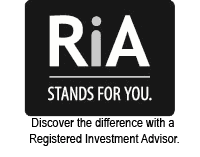What should you know? Supplemental Retirement Accounts provide an opportunity to increase retirement savings beyond traditional methods like the 401(k), 403(b), or Roth Accounts.
Supplemental Retirement Accounts: Definition, Limits and When, Where and How to Take Advantage.
When it comes to saving for retirement, the IRS code offers numerous options. Traditional saving opportunities include defined contribution (DC) plans like the 401(k), 403(b) (aka, Tax Sheltered Annuity), SEP-IRA, and many of their “after-tax counterparts”: the Roth Account. Although less common, defined benefit (DB) plans (aka pension plans) generally provide the option of guaranteed monthly income in retirement. A defined formula that factors in your years of service and average salary usually determines the benefit amount.
In addition to these employer-sponsored plans, we can also save for retirement through tax-advantaged accounts. Some of the accounts they include are, for example, the traditional IRA and Roth-IRA (different from the Roth Account!). What do all these plans have in common? They have limits. The IRS limits how much a defined benefit can payout to beneficiaries. Employer-sponsored retirement plans like the 401(k) or 403(b) have limits for both employee salary deferral (2022 = $20,500) and the overall contribution amount (2022 = $61,000).
If you are a highly compensated individual, this can be a challenge when it comes time to replace an adequate share of your income in retirement. You’ll likely need additional ways to save your earnings on a tax-advantaged basis. This is where Supplemental Retirement Accounts (SRAs) can offer significant benefits. It is important to be aware of these savings opportunities and consider taking advantage when and where it makes sense.
What are Supplemental Retirement Accounts?
SRAs come in several different forms. You may have heard of plans like the public 457(b) plan (government employees) and its private counterpart, the 457(f) (non-government tax-exempt organizations). The Supplemental Executive Retirement Plan (SERP) is another SRA that organizations may offer to executive-level employees. These SERPs are also often called “Top Hat” plans or golden handcuffs as they can require an executive to meet certain milestones before becoming available.
But what if we don’t have access to a SERP or one of the 457 plans mentioned above? A relatively new, but increasingly common, SRA is the Supplemental Savings Account. These accounts, when available, are typically offered part of an employer-sponsored retirement plan like the 401(k). Participants can contribute to their Supplemental Savings Account, generally, on an after-tax basis. Like other tax-qualified accounts funds within this account grow tax-deferred.
So, what is there to get so excited about with the Supplemental Savings Account? This option, if offered by your plan, can provide tremendous flexibility and an opportunity to save significantly more towards your retirement. Please read on.
Contribution Limits
Generally, Supplemental Retirement Accounts allow participants to defer or receive, compensation BEYOND the IRS limits. Remember, for qualified retirement plans like the 401(k) you are limited to deferring no more than $20,500 ($27,000 if over 50) on a pre-tax basis. Your elective deferral combined with any employer contributions (matches or profit-sharing) cannot exceed $61,000 ($67,500 if over 50). This is called the 415(c) limit, named after the IRS code which defines the maximum contribution.
A 457 plan limits the combined employee and employer annual contribution to $20,500 (2022). However, these contributions do not count against the elective deferral limits on other qualified plans like the 401(k) or 403(b). A plan participant under age 50 could defer $20,500 to their 401(k) and another $20,500 to a 457 plan. Deferrals to the 457 plan also do not count against the combined (participant and employer) contribution limit of $61,000 (2022). So, what is the catch? A 457 and SERP plans are considered “non-qualified” accounts. That is, while they have the benefit of being tax-deferred, they are not afforded the protections that “qualified” retirement plans like the 401(k) receive. These protections are provided by the Employee Retirement Income Security Act (ERISA) and include, among other things, informational disclosures, testing requirements, and the ability of participants to sue for benefits or breaches of fiduciary duty.
What if?
But again, what if you don’t have access to an SRA like the 457? If your employer’s retirement plan offers a Supplemental Savings Account, you’re potentially in luck. These accounts generally attach to a qualified retirement plan, and in doing so, are provided with the same ERISA protections. Participants who have access to a Supplemental Savings Account can contribute on an after-tax basis beyond their individual elective deferral limit ($20,500) and up to the IRS 415 (c) maximum ($61,000).
This may best be illustrated through an example:
Kate (age 40)
She works for Rockwell Automation and is not only a participant in their 401(k) plan but also, has the option of contributing on an after-tax basis to a Supplemental Savings Account. Her plan also allows her to contribute to a Roth-401(k) with after-tax dollars. Kate makes $200,000 per year and her employer matches 100% of her contributions up to 6% of her salary. She is contemplating a contribution to her supplemental account but is unsure of how much she can put in. Assuming Kate elects to defer 16% (limited to $20,500) of her salary with half allocated to her 401(k) and the other half to her Roth-401(k), her 2022 contributions would look as follows:
| Kate | Employer | |
| 401(k) | $10,250 | $12,000 |
| Roth-401(k) | $10,250 | $0 |
| Total | $20,500 | $12,000 |
In this example, Kate has maxed out her individual contribution. Her employer has made a matching contribution of $12,000 for a combined total of $32,500. Kate still has “headroom” of $18,500 before she would reach the IRS limit of $61,000 (under age 50). If she opted to, Kate could put this additional amount ($18,500) into her Supplemental Savings Account on an after-tax basis, and in doing so, maximize her 2022 retirement saving contribution.
This example demonstrates the benefit that the Supplemental Savings Account can provide, especially for someone who is a high-income earner and in need of more tax-deferred retirement savings.
Taking Advantage
Employer-sponsored retirement plans may vary, but with respect to a former employer (Rockwell Automation), these Supplemental Savings Accounts can offer tremendous flexibility. Rockwell’s plan includes the supplemental account (for some, but not all employees); however, they also provide participants the option of converting contributions immediately to their Roth-401(k). This gives employees the ability to save significantly more to a tax-exempt account (Roth-401k) than they would otherwise be able to contribute. That is potentially very compelling.
Additionally, upon separating from service a participant may choose to rollover their 401(k) balances. Any pre-tax funds in the plan (ie – 401(k)), will move into a rollover IRA and continue to have tax-deferred status. Contributions in the Supplemental Savings Account, however, will rollover according to their taxable status. Basis (contributions) will roll into a Roth-IRA while earnings (un-taxed) will move into the rollover-IRA. Again, this demonstrates the potential to build your tax-exempt retirement bucket at a much faster pace.
Taking advantage of any Supplemental Retirement Account savings opportunities will depend upon your unique situation and objectives. Certainly, there are distinct advantages to leveraging SRAs, like a Supplemental Savings Account, in your early-to-mid career. These plans can help participants build tax-exempt retirement savings at a time when their effective tax rates are likely to be lower, relatively speaking. That does not suggest that a late-career participant who desires to leave a legacy in a tax-efficient manner wouldn’t benefit as well. Like many things, it all depends.
Talk to your benefits department and find out if your plan offers supplemental savings opportunities. If it does, it may be wise to review this option with your trusted advisor!








